I arrived in Munich after a long day of travelling by train. 13 hours and 45 minutes to be exact. I’d started in Lübeck in the morning and finally arrived in Munich just before 11 pm. The reason why it took so long is because I chose the cheapest ticket available with six transfers. For the entire journey, I paid just 42 euros. That’s pretty cheap considering I travelled 830 km from the very north to the very south of Germany!
I was in Munich last summer for two reasons. The main reason was to pick up the rental car that I’d be using to explore Germany further for the following two weeks. But I was also there to get to know the city which is the capital of Bavaria, a culturally distinct state that is well known for its unique culture with Catholic plurality, conservative customs and traditional dress – oh yeah, and Oktoberfest! But I wasn’t in Bavaria to drink beer, I was there to learn more about the culture and to see the most beautiful nature in Germany. Because Bavaria is also home to Germany’s small part of the Alps!
As soon as I stepped out of the train, a group of happy people in lederhosen and dirndl walked past me. Welcome to Bavaria!
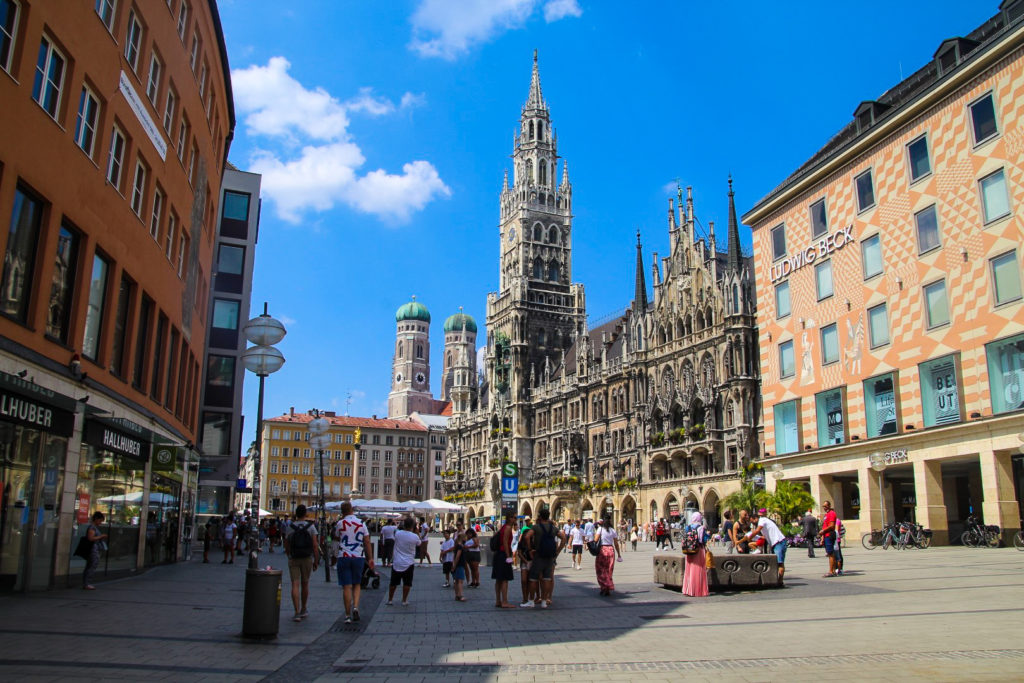
The full day of travel had been exhausting to say the least and I couldn’t wait to get to my hostel. Luckily, the cheapest hostel that I could find in Munich was just two minutes walk from the station. I had a wonderful night’s sleep and woke up rather late, but still with plenty of time to see what I wanted in Munich. I’m not a big city person, so a day in Munich was fine for me.
I walked through a bunch of unattractive neighbourhoods near the station and into the centre through the Sendlinger Tor, one of Munich’s three remaining gothic town gates from the late 13th century. This is where the city started to get interesting. It wasn’t long until I spotted a gorgeous building with colourful Baroque decorations. Maps.me told me it was called Asam Church, built from 1733 to 1746 by two brothers, the sculptor Egid Quirin Asam and the painter Cosmas Damian Asam. It’s pretty obvious that two artists designed this gorgeous church!
A woman was singing loudly as I walked in so I waited with pictures until she was finished. Instead, I stood in awe, staring up at the murals that cover the interior of the church. By the time she had finished, lots of people had joined me, but I did manage to snap a few pictures of the gorgeous interior.



I walked to Viktualienmarkt, a food market, hoping to find some vegan food as I hadn’t had breakfast and it was way past lunch time, but I’d forgotten that it was Sunday. Most shops and markets were closed. So I continued into the very heart of Munich, to Marienplatz where I still failed to find food.
Marienplatz is the main square in the city, and it has been since 1158. The square is a gorgeous setting, dominated by the new city hall, Neues Rathaus, and the old city hall, Altes Rathaus. And the area surrounding the square is home to lively shopping streets and many gorgeous churches, three of which I visited free of charge. Most churches I visited in Germany charged for entrance, but in Munich they were all free – as God’s houses should be.


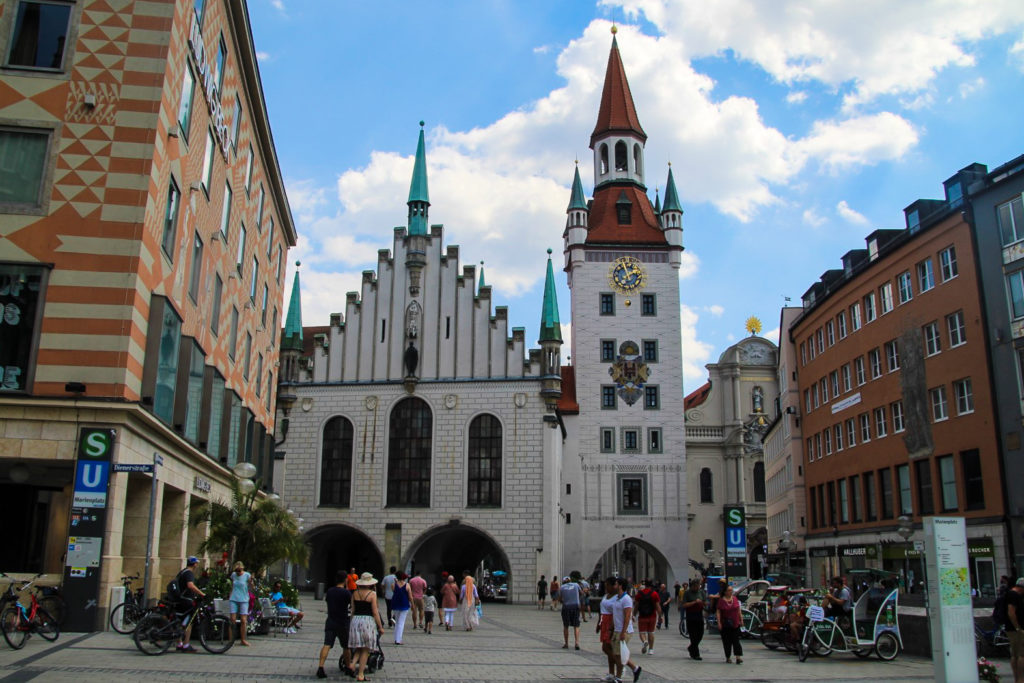
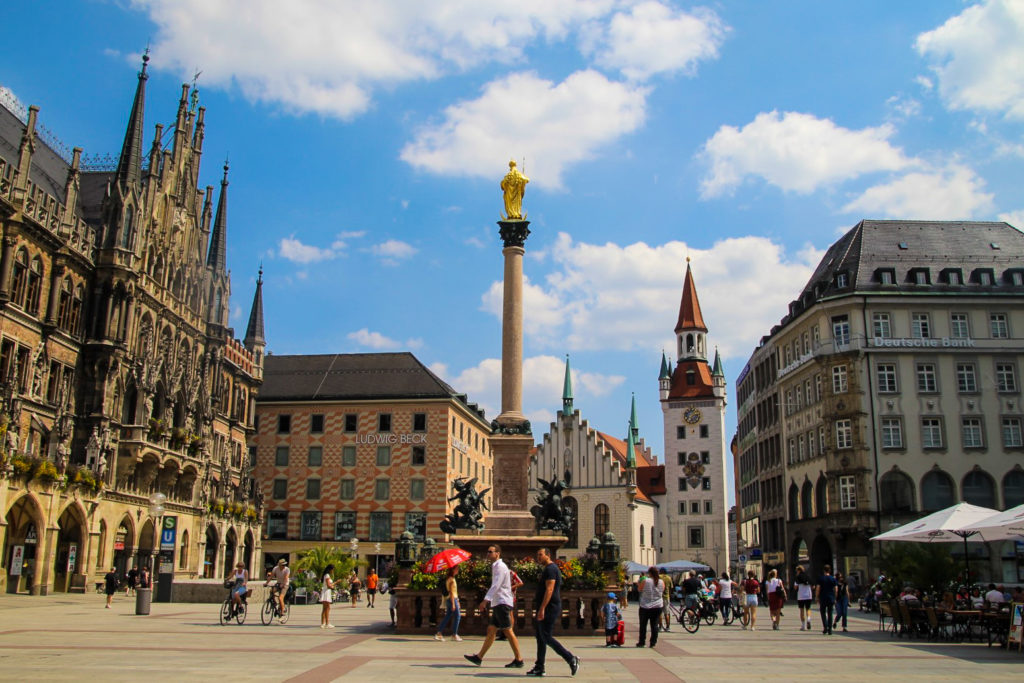

My church tour took me to St. Peter’s Church, the oldest parish church in the city from the 13th century with an interior almost as beautiful as Asam Church; to the Frauenkirche from the 15th century, the tallest church in the city, but the least elaborate when it comes to decorations; and to the Theatine Church of St. Cajetan, a gorgeous yellow church in Italian high-Baroque style from the late 17th century.

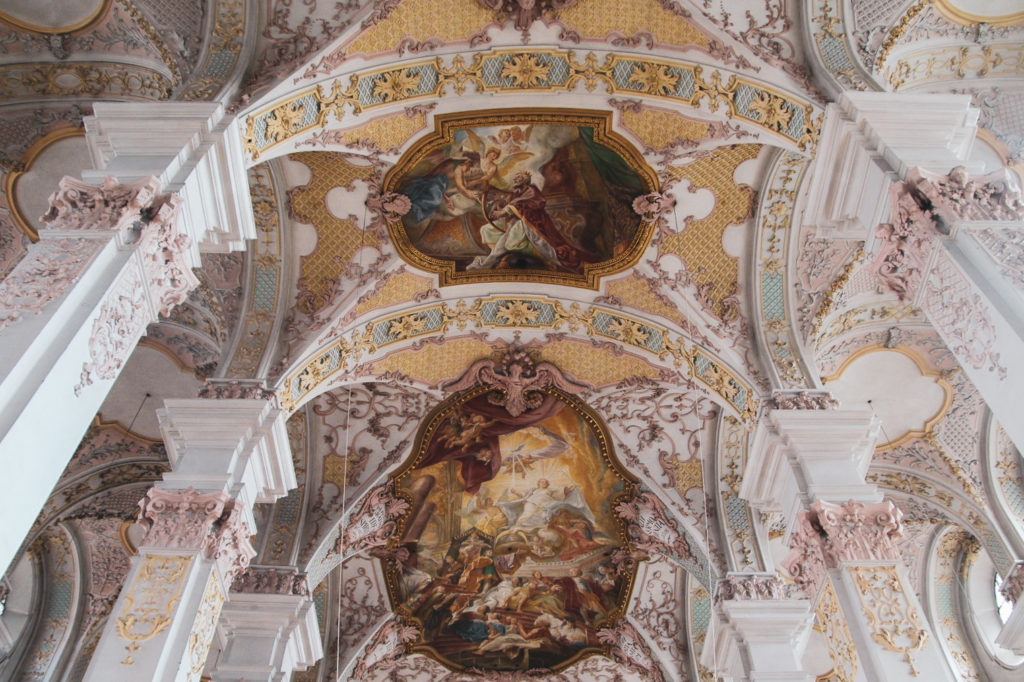



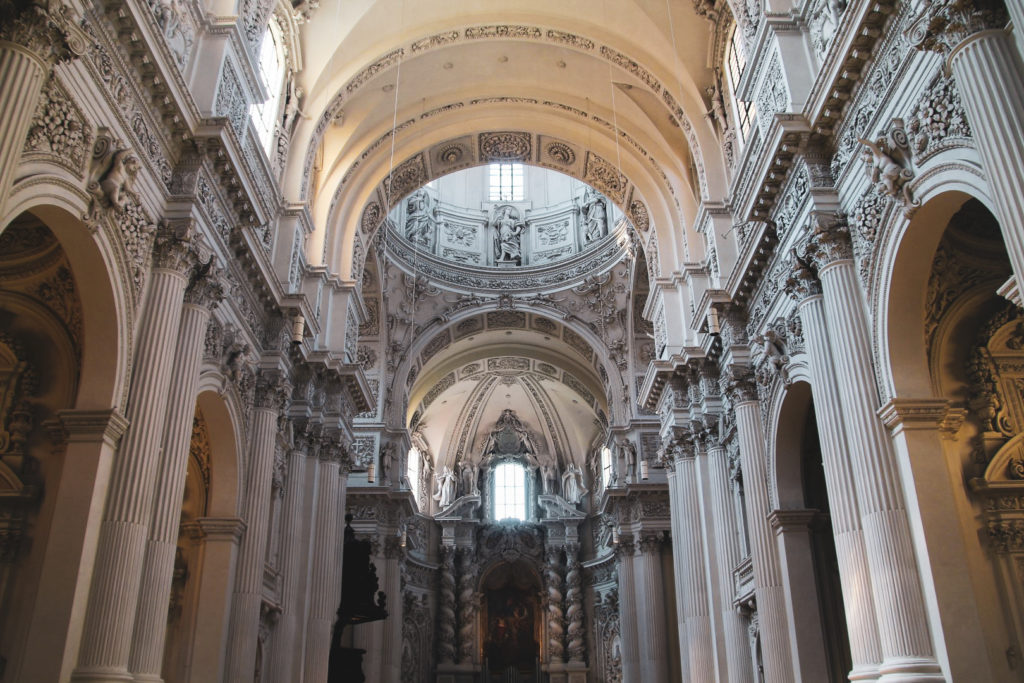
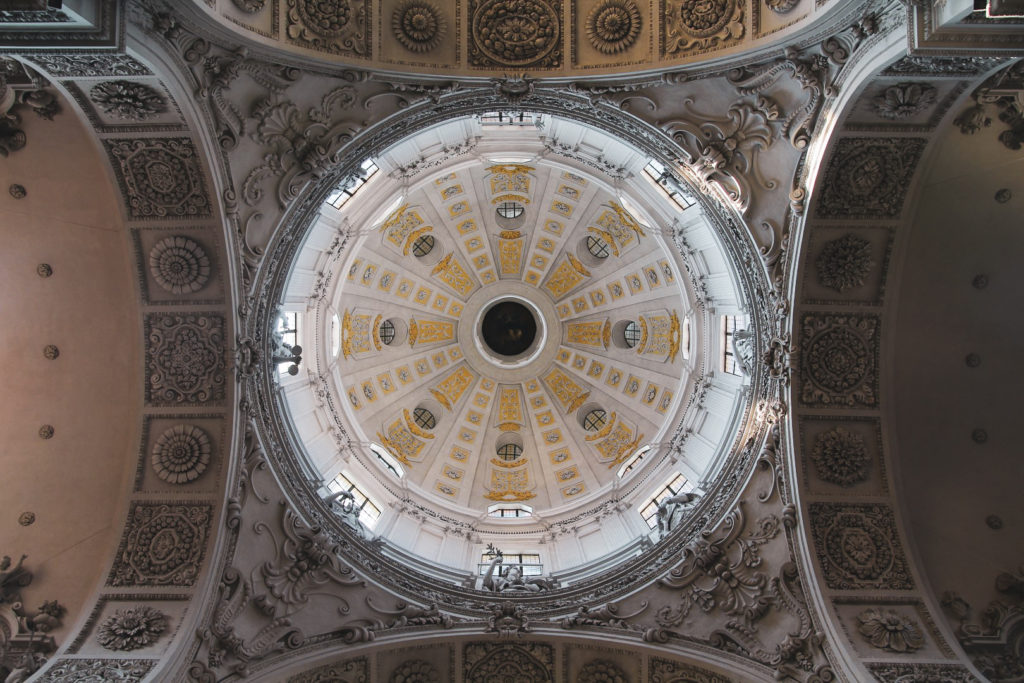
Still in search of food, I headed to Odeonsplatz but I soon forgot about my hunger as I discovered the gorgeous Munich Residenz, the former royal palace of the Wittelsbach monarchs that ruled over the former Kingdom of Bavaria from 1805 to 1918.
Unlike most royal palaces in the world, Munich’s is free to roam through the courtyard and the beautiful gardens which are decorated with colourful flowers and beautiful marble monuments. There were hardly any people in the gardens, a welcome change from the otherwise busy city!



As I walked out of the palace gardens and onto a nearby street, I spotted a Starbucks and to my delight, they had a vegan sandwich. I didn’t think being vegan would be an issue in Munich since I found it easy in other parts of Germany, but I tried many café’s that day and while all of them served a vegetarian dish, only Starbucks had jumped on the vegan wagon!
With my stomach finally full, I continued my walk through Munich. I’d seen everything I wanted in the city centre, so I headed to the last place I wanted to see in Munich – the Englischer Garten, one of the world’s largest city parks!
But on this hot summer day, I wasn’t the only one who’d headed to the park. What I thought would be a peaceful hour or so in a shady spot turned out to be quite the opposite. The park was packed with people. Had it not been 2020, I wouldn’t have cared at all, but it did seem a bit crazy considering the ongoing pandemic. I get it though. Bavaria is a landlocked state and the park is full of water sources, so of course people are going to flock there on a hot day.
I found a bench which was far enough away from other people and then sat there watching the world go by for a while before calling it a day.
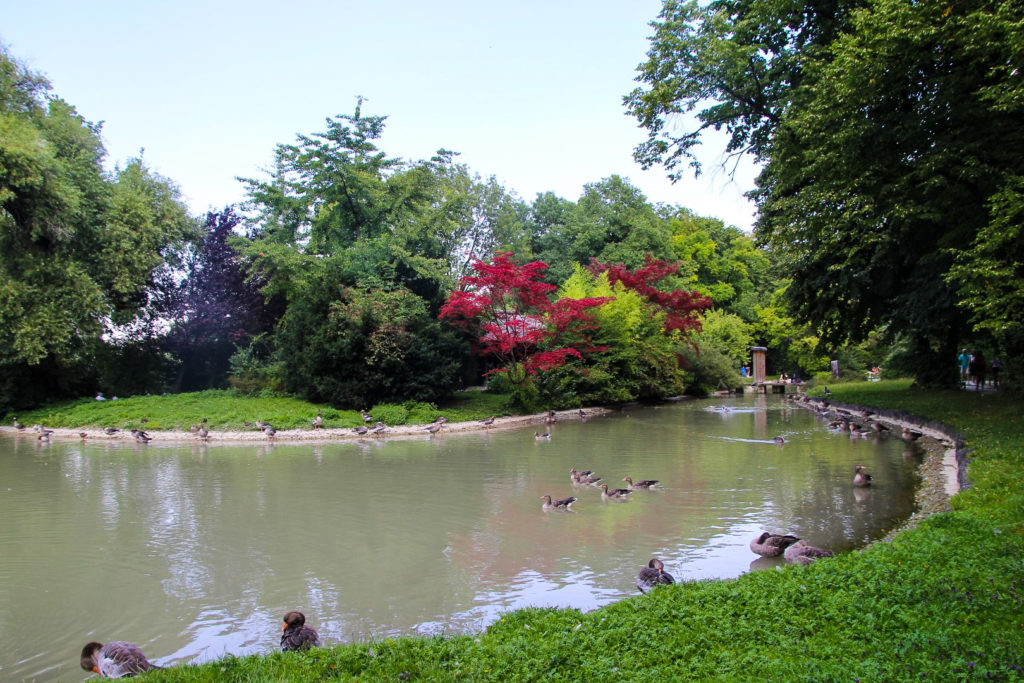
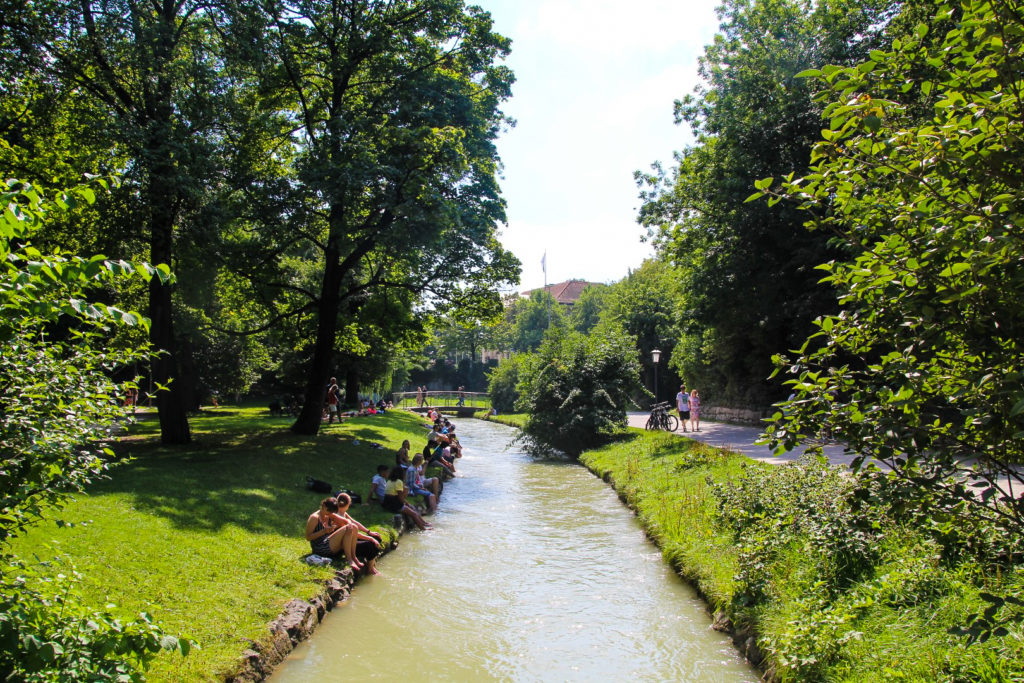
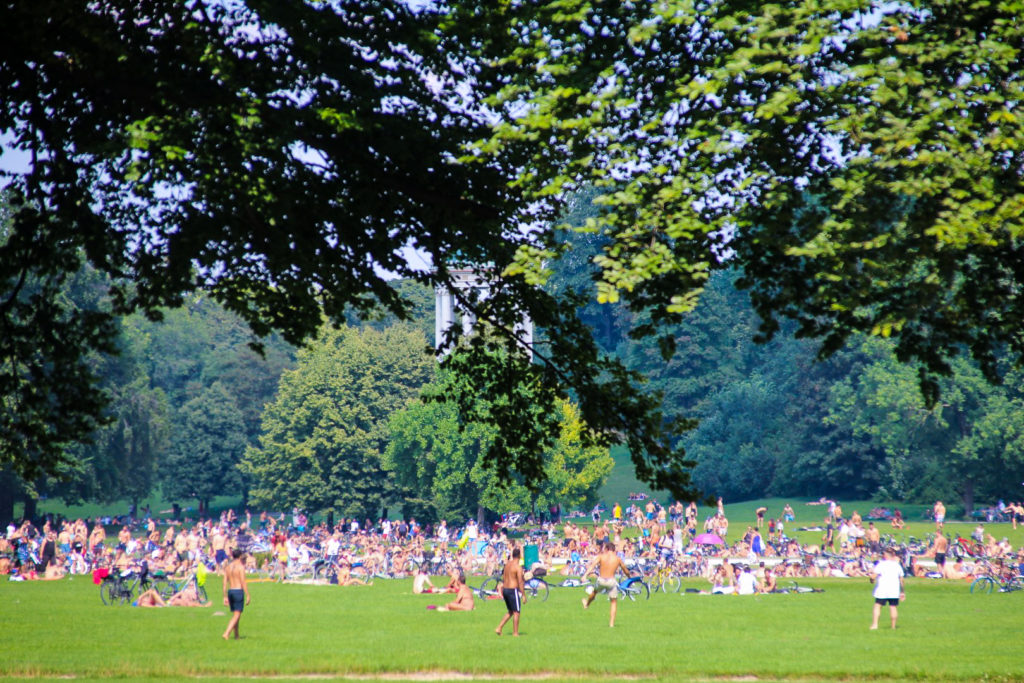
Munich had been a lovely introduction to Bavaria and Germany’s South. The following day, I embarked on my next journey, my two-week roadtrip through the southern and central parts of Germany.
For the next fourteen days, I lived in the rental car. I drove for miles on end, discovered incredible destinations and at night, I fell asleep in the front seat of the car. I travelled far and wide through Germany, from the Alps to the Black Forest and as far north as Biesenthal north of Berlin. I also took several detours into Austria and Switzerland. Stay tuned for much more on that epic journey!
Leave a Comment
Pingback: A day in Innsbruck, the beautiful capital of the Alps – Northtrotter on 16/02/2021

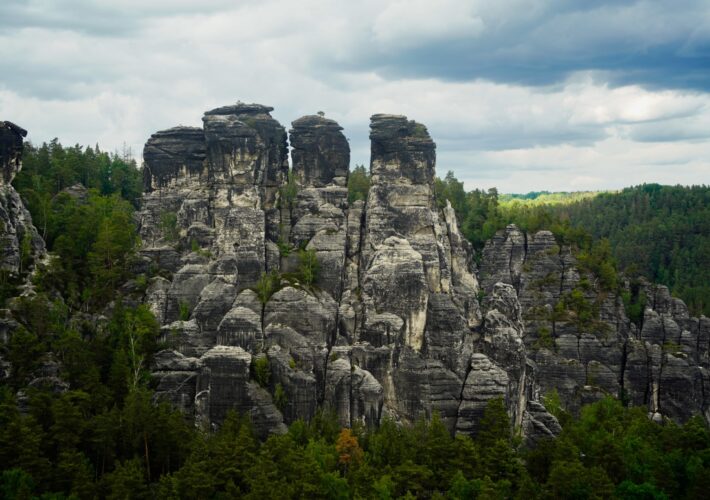
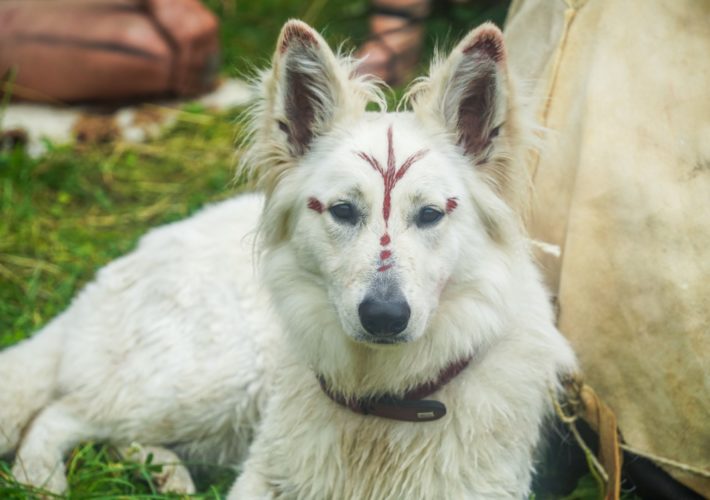
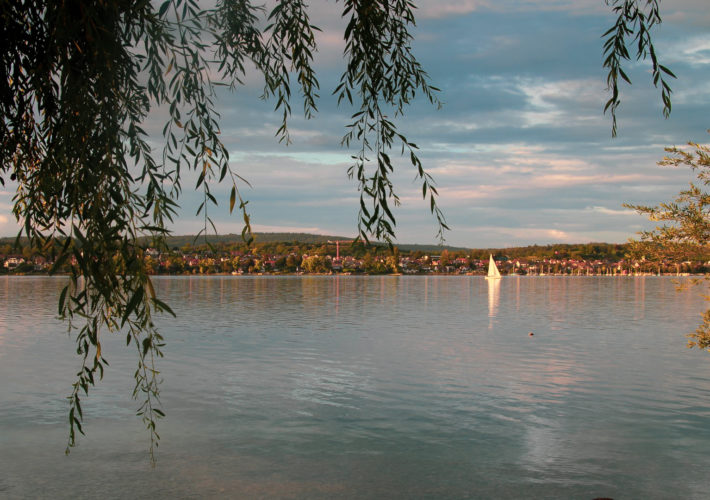

1 COMMENT